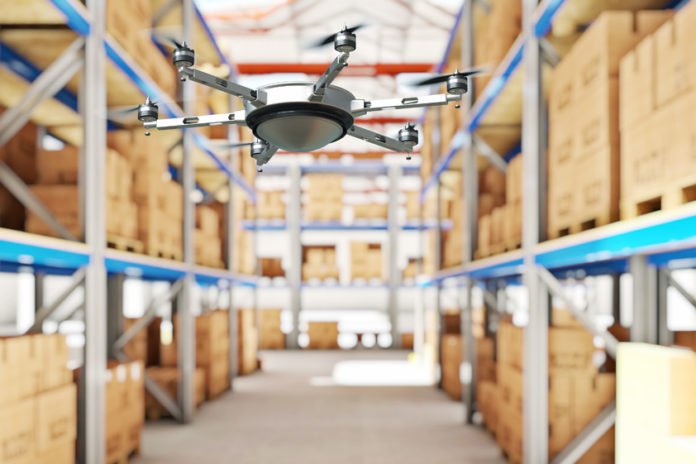Radio frequency ID tags generally transform supply chain management. They enable warehouse manager to log stock significantly more productively. But because of modern retail operations, these tags become inefficient.
To make RFID signals much more efficient, MIT scientists have developed a system through they can detect any objects that enable small, safe, aerial drones to read RFID signals from tens of meters away.
According to researchers, the system could be used in large warehouses for both continuous monitorings. It could prevent inventory mismatches and location of individual items. In short, the system helps employees to rapidly and reliably meet customer requests.
The focal test in planning the framework was that, with the present condition of the self-ruling route. Drones are an only safe thing that can pass within close range of humans. Scientists used drones to relay signals emitted by a standard RFID reader.
The drone also solves safety problem. Additionally, it could be deployed in conjunction with existing RFID inventory systems, without the need for new tags, readers, or reader software.
Fadel Adib, the Sony Corporation Career Development Assistant Professor of Media Arts and Sciences said, “Between 2003 and 2011, the U.S. Army lost track of $5.8 billion of supplies among its warehouses. In 2016, the U.S. National Retail Federation reported that shrinkage loss of items in retail stores averaged around $45.2 billion annually. By enabling drones to find and localize items and equipment, this research will provide a fundamental technological advancement for solving these problems.”
Scientists named this system as RFly. The location-detection or localization system uses a variation of a device called an antenna array. The signals detected by the antennas will be slightly out of phase. From those phase differences, a software can deduce the angle of transmission and thus the location of the transmitter.
The drone is too small to carry an array of antennas, but it is continuously moving to take readings. To combat interference, it changes the signals’ relative phases. They then added a low-frequency component.
As the drone was still moving, the phase shift of the signals that reach the reader result from not only the drone’s position relative to the RFID tag but also its position relative to the reader. Thus, a reader can properly tell how much each of those two factors contributed to the total phase shift.
Scientists equipped their drones with its own RFID tag. An automaton interchanges between transferring the per user’s flag to a labeled thing. Basically, it gives its own particular label a chance to mirror the flag back, with the goal that the per user can appraise the automaton’s commitment to the aggregate stage move and evacuate it.
Professor Swarun Kumar said, “Relays have been used in communications for a long time, even to bring networks to rural areas. What changes here is that one of the ends is battery-free, and they want to location-track the battery-free device, which requires need phase-consistent measurements. These together make the problem quite challenging.”
“That’s what I think is the conceptual novelty in this work. I anticipate that there might be a lot more applications than the inventory tracking problem — which in and of itself is quite important.”
